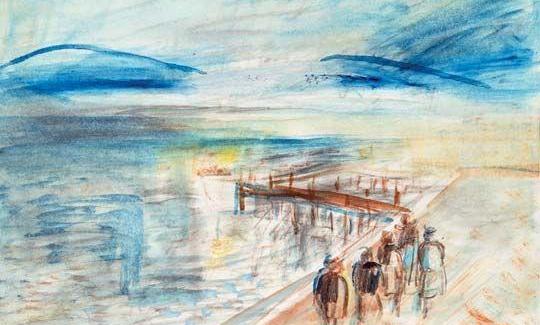
On New Forms (an essay)
 12 min
12 min
On New Forms (an essay)
In my early 30s I started to turn towards page poetry and writing for theatre rather than performing on stage. I was trying to find the kind of profession where I could still make use of the skills I'd acquired during my music career, but didn't have to expose myself to constant attention and the draining responsibility of talking to crowds even when you don’t have anything important to say. When I began working on stage productions as a writer, I often encountered a sort of anachronistic attitude among theater makers, a lack of will to experiment and a very strong sense of tradition, that is an insistence on straightforward storytelling. In Hungary, even the most acclaimed art house theaters hardly ever challenge conventions and step out of their comfort zone: the good old heritage of Stanislavsky’s psychological realism. The sad truth is that very few of these performances
are subversive or experimental.
As far as my personal development is concerned both as a poet and a playwright
I find a great deal of inspiration in academic research. Ideas for my projects usually originate from theory, be it the field of theatre and performance studies, philosophy, or positive sciences. How does our consciousness work in theatre? How is it possible that we see a role instead of the body of an actor? Why do we suspend our disbelief when we see a performance? What are the essential elements of theatre? According to Peter Brook nothing more than an empty space: an actor walking across a room, and a spectator observing them. Or maybe even less. One of my professors, András Visky, referencing St. Augustine’s Confessions, once told us, “You don't need a stage or a spectator either: prayer is theatre because God is watching you.” I was very taken with this idea . I usually prefer theoretical approaches that broaden the margins of concepts and definitions instead of narrowing them down. So, I also try to expand my idea of theater and include all forms of performative practices in my concept of theatricality, whether they are performances outside brick-and-mortar institutions, religious rituals, or everyday social performances.
Being a writer, however, I am at all times constricted within the margins of written text. That's why, partly based on Hans-Thies Lehmann’s thought, I like to look at postdramatic theatre not only as the elimination of dramatic text in favor of the performative element, but also as the re-emerging of the poetic and epic text in a different, more democratic theater practice. We continue to use this text, but in a different way: nor as the creator-author prescribes it, neither according to the naturalist convention of mimetic representation, but in a relatively new manner, as an element equally important to all the other elements that make up a performance: movement, proxemics, sound, lighting, costume, set design, etc.
Many researchers agree that ancient rituals and theatre spring from the same roots, and that theatrical events have taken place during times of festivities since the antiquity. Some theoreticians believe that European theatre was born when, in ancient Greece, the chorus separated itself from the mass adoring Dionysus, thus enabling the emergence of the autonomous performer and the spectator. Compared to today's theater these ancient performances were highly ritualistic and were based on liminality – the time and place of the rituals were somewhere between myth and everyday life; being festivities, they had their own periodicity –, transformation of the actor and the spectator alike when taking up roles or experiencing a change in their views or ideas, a certain convention of norms and habits of how to perceive theatre and, of course, the element of catharsis. They were, therefore, different in many ways from our everyday theatre experience, and we could hardly call them “realistic” in the sense we use it today. Although they already involved the act of role playing, that is "being someone else," and theatrical events such as the Great Dionysia served as a form of mass entertainment, Ancient Greek theatre was first and foremost a ritual practice that served the adoration of the gods, maintained social structures, and a system of beliefs. (Much like the tradition of the medieval Catholic liturgy "Quem queritis?" – the two Marys looking for Jesus’s body in the tomb – that we sometimes think of as another starting point of theatre.)
So even though the two actors stepping forward from the chorus in Aeschylus’s Oresteia meant another step towards dramatic theatre, ancient rituals were a far cry from today’s psychological realism and the so called “re-presentation” of the naturalistic illusion theatre. As far as I see it, they were much like the text-based performances of postdramatic theatre today – without the slightest attempt at imitating everyday life. Therefore, it seems that the earliest forms of rituals very much resembled the most recent performance practices of postdramatic theatre. Of course, we cannot see Ancient Greek theatre the way it existed, through the eyes of its original spectators, but we can speculate about certain characteristics similar to today’s performance practice.
I'm a huge fan of new forms, like Trepljov in Chekov's The Seagull. And technology seems to be making astonishing progress in the field of contemporary theater. Multi-media performances, augmented reality, digital land- and soundscapes and the use of artificial intelligence are surely opening the way to thrilling new possibilities. Of course, this is true for every historic period: it was Wagner at the end of the 19th century who changed the tradition of theatre once and for all by turning off the lights in the auditorium. Lately, I have seen productions that included technology as their core element, without which their central issues couldn't have been addressed. Guy Debord's Society of the Spectacle, and Jean Baudrillard's simulacrum theory can most definitely be numbered among these interesting problems. However, I have never had a life changing experience in theatre because of technology alone.
Theatre has clearly gone through a significant development during the past 2500 years, and there are technologies available today that didn't even exist 25 years ago. But in my opinion, in an inspiring theater performance there always must be a unique vision about the relationship between spectator and actor that is worthy of attention, a certain shift of paradigm that puts everything in a different perspective. Marcell Duchamp’s objet trouvé, for example, which, at the time of the classical Avant-garde, proved that the aesthetic value of an object of art depends greatly on the institutional context, that is, the museum in which it is exhibited. Or the performative turn of the 1960s when theatre, rather than being a finished artifact, returned to being a contingent and ever-forming event with the participation of the physical bodies of the actors and spectators alike. Not to mention the essential questions of mediacy and immediacy we are faced with in the world of Insta-live sessions and Zoom-conference calls turned into online theater performances.
There is a fair chance that, in this time of digital capitalism, we are on the verge of a something relatively new. After the theoretical frameworks of the 20th century such as phenomenology, structuralism, semiotics, post-structuralism, hermeneutics, deconstruction, psychoanalysis, feminism and postcolonialism, nowadays we see a huge explosion of post-human and new realist theories both in academic discourse and the arts. Anthropocene, or object-oriented ontology are of course new in as much as they shift their focus of attention from the humanistic perspective to the non-human entities of life. But again, they are not entirely new. Throughout the history of philosophy and arts, theorists and authors have thought critically about what it means to be human. Just to mention a few examples: in 19th century German Romanticism, E.T.A. Hoffmann in his The Sandman, or George Büchner in Leonce and Lena both wrote eerie gothic stories about humans becoming robots; later, in the 20th century, Kafka, in his short stories and novels such as Metamorphoses and The Burrow, thoroughly explored the questions of “becoming-animal” (Gill Deleuze’s term). They all, therefore, contested the idea of anthropocentrism. And even though some works of art are being produced now without direct human interaction and emphasize the non-human component of creation, in the end we humans are still the only ones who can catalyze and appreciate art and start a discourse about it. It is only our focus that has recently shifted – as well it might – to the post- or non-human agencies of the world.
I'm convinced that we choose the kind of theory that suits us best according to our personal experiences and psychological character. When a few years ago I chose, as my research topic, to explore the relationship of theatre to early Husserlian phenomenology instead of, let's say, Marxist critical theory, it was because I had experienced a great disappointment concerning intersubjectivity, that is the interconnectedness of people’s minds and bodies. Today, in a world of post-truth politics and social media biases it is an even more challenging task to understand each other, than before. A philosophy like early Husserlian phenomenology that is based on a subjective apprehension of the world and that we often call "egology" seemed to suit my impressions about the world at the time, and it greatly resonated with my feelings of melancholy and alienation. I really felt like we are trapped in our subjective selves, and intersubjectivity is nothing more than a futile effort to try to figure out what's in the other person's head, something, frankly, we will never be able to know. Now, I think about this quite differently, with much more openness and optimism and with the comforting idea of the Heideggerian being-in-the world, that is the inseparability of subject from object (and nature), or, to go even further, being part of the “flesh of the world,” as Merleau-Ponty puts it. However, traits of feeling of being isolated and alienated from the Other remain in my thinking as we are getting more and more distant from each other due to the extensive use of social media in this time of digital capitalism, the rise of nationalistic political systems, the worldwide pandemic, climate crisis and the terrible war in Ukraine.
©Anna Bentley 2022 for the English translation









 English
English
 Français
Français
 Deutsch
Deutsch
 Italiano
Italiano
 Español
Español



 Contribute
Contribute




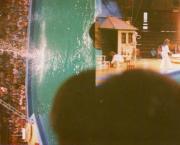
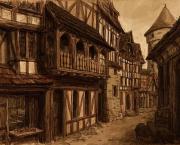
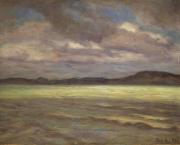
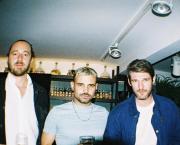
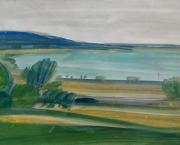

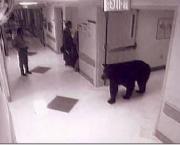

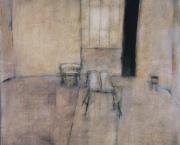

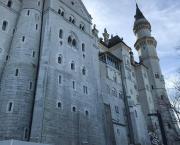


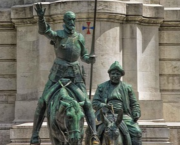

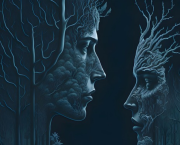

 You can support your favorite writers
You can support your favorite writers






Andras Varga 2 years ago
Great essay. There is book with some similar thoughts, titled Fears and symbols by Elemér Hankiss. It explores how myths and rituals translated into the current consumer civilization. It mainly deals with everyday life, not theather or arts, but I feel there is a close connection there.